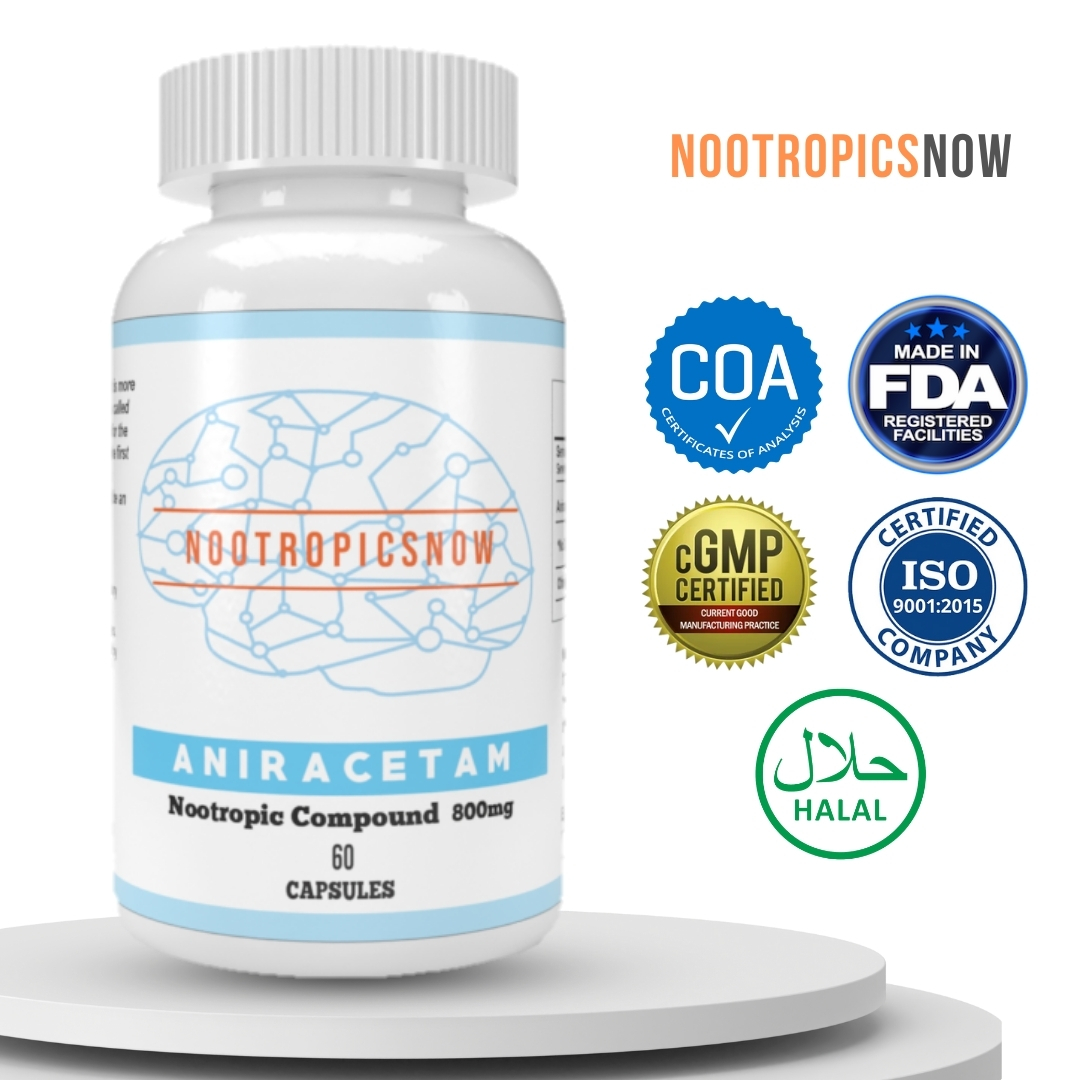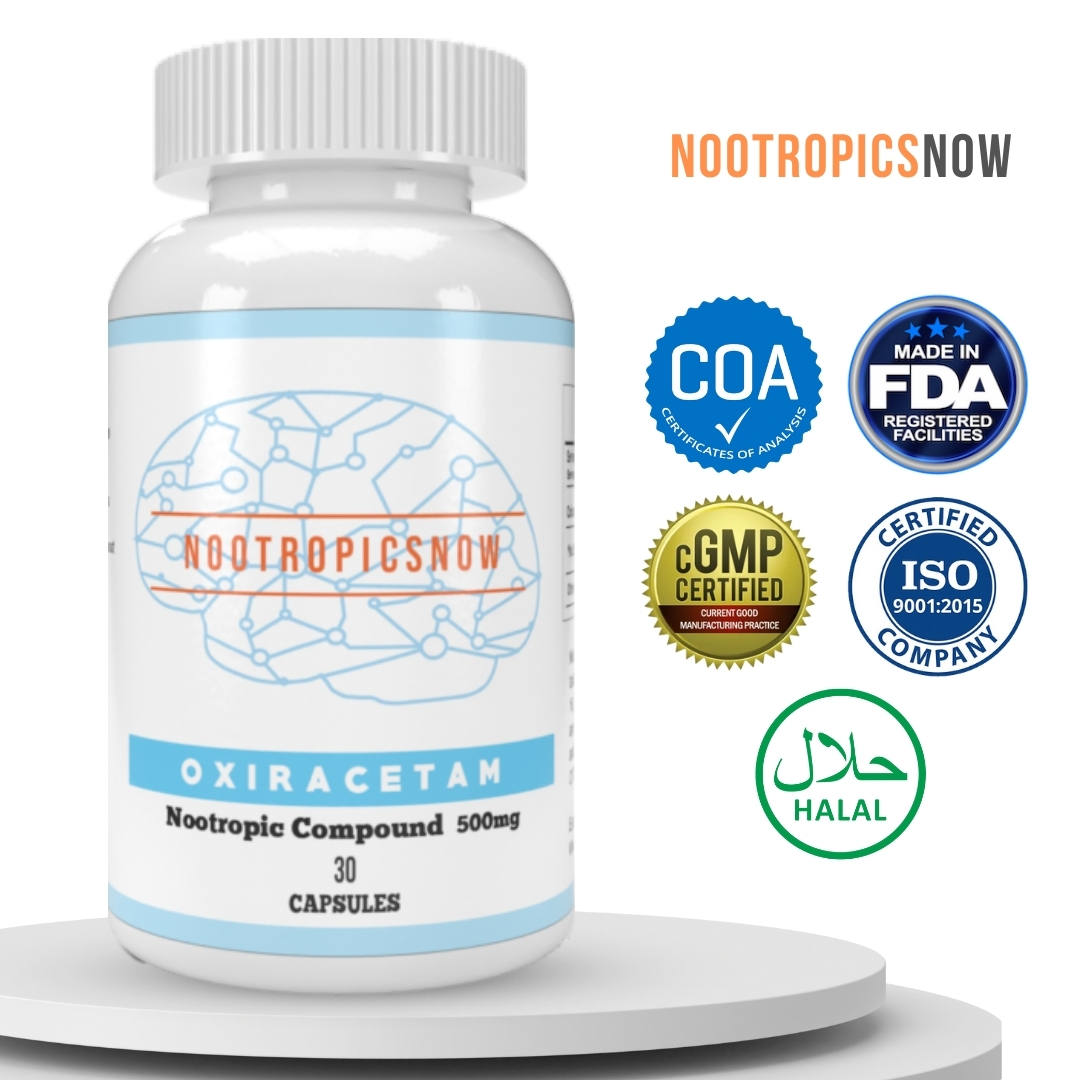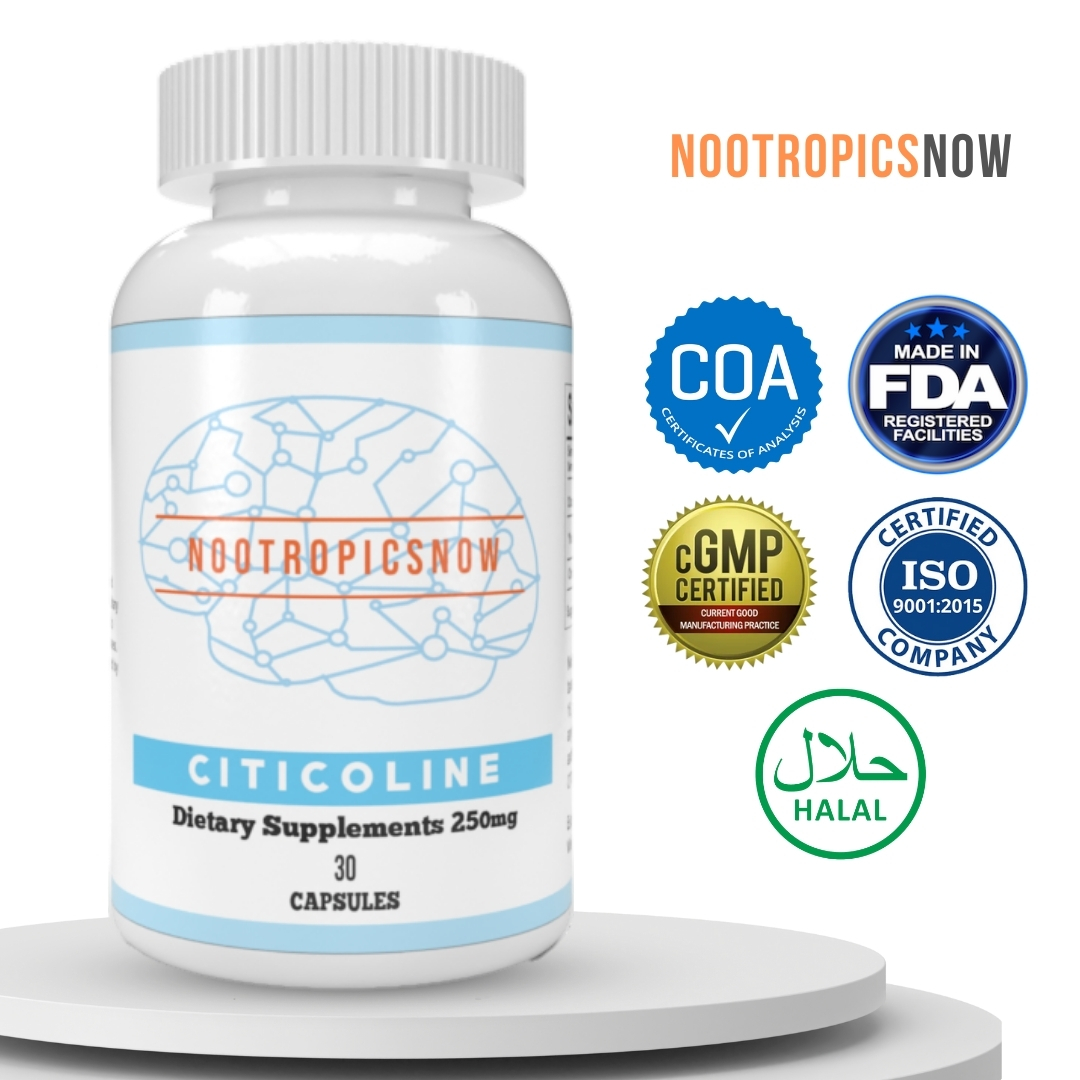Racetams: Benefits, Uses & Side Effects

`markdown
Racetams: Exploring Cognitive Enhancement
Racetams constitute a class of synthetic nootropics lauded for their potential cognitive-enhancing properties. These compounds, derivatives of 2-pyrrolidone, have garnered attention from individuals seeking to improve memory, focus, and overall cognitive function. Piracetam, the first synthesized racetam, has paved the way for numerous analogues, each exhibiting unique characteristics and effects. This exploration dives into the racetam family, investigating their mechanisms of action, individual profiles, potential benefits, and safety considerations.
Understanding the Racetam Family
Racetams share a common chemical structure: a 2-pyrrolidone nucleus. However, variations in their molecular structure result in diverse pharmacological profiles. This class of compounds broadly influences cognitive processes, though the precise mechanisms remain an area of active research. Despite the unknowns, a significant body of evidence suggests racetams interact with several neurotransmitter systems.
Key Characteristics of Racetams:
Mechanisms of Action: How Racetams Work
The exact mechanisms by which racetams exert their cognitive effects are complex and multifaceted. While the precise workings remain elusive, several key interactions have been identified:
It’s important to understand that the effects of individual racetams can differ slightly. Furthermore, these processes aren’t entirely exclusive. Consequently, the interplay of these mechanisms likely contributes to the observed cognitive benefits.
Individual Racetam Profiles: A Closer Look
The racetam family encompasses several distinct compounds, each with its own pharmacological profile and potential benefits:
Piracetam: The Original Nootropic
As the pioneer racetam, piracetam has been extensively studied and widely used. Its purported benefits include:
Aniracetam: Focus and Mood
Aniracetam is known for its potential anxiolytic and mood-enhancing effects, in addition to its cognitive benefits. Key features include:
Oxiracetam: Stimulation and Processing Speed
Oxiracetam is noted for its stimulating effects and potential to improve processing speed. Notable aspects include:
Pramiracetam: Potent Memory Booster
Pramiracetam is considered one of the most potent racetams, primarily used for memory enhancement. Its benefits encompass:
Phenylpiracetam: Stimulation and Physical Performance
Phenylpiracetam stands out due to its phenyl group, enhancing its ability to cross the blood-brain barrier. It’s known for its stimulating and performance-enhancing properties:
Potential Benefits of Racetams
While individual racetams vary in their specific effects, the class as a whole offers a range of potential cognitive benefits:
It’s crucial to acknowledge that the evidence supporting these benefits varies in strength. Further research is needed to solidify the efficacy of racetams for different cognitive functions.
Safety and Side Effects: What to Consider
Racetams are generally considered safe, with a low incidence of serious side effects. However, potential adverse effects should be considered:
Starting with a low dose and gradually increasing it allows users to assess their tolerance and minimize potential side effects. Choline supplementation can often help to alleviate headaches associated with racetam use.
Racetams and Choline: A Synergistic Relationship
Choline is an essential nutrient that serves as a precursor to acetylcholine, a neurotransmitter crucial for memory and learning. Racetams are thought to increase acetylcholine utilization in the brain. Therefore, supplementing with choline alongside racetams is often recommended. This combination can enhance the cognitive benefits of racetams and mitigate potential headaches caused by acetylcholine depletion.
Common Choline Sources:
Legal Status and Availability
The legal status of racetams varies across different countries. In the United States, racetams are not approved by the FDA for any specific medical use. They are often sold as research chemicals or dietary supplements, though their legality can be ambiguous. It is essential to research the legal status of racetams in your specific location before purchasing or using them.
Responsible Use of Racetams: Key Guidelines
If you choose to explore racetams, it’s crucial to do so responsibly and with careful consideration:
Conclusion: Navigating the World of Racetams
Racetams represent an intriguing class of nootropics with the potential to enhance cognitive function. While the precise mechanisms remain under investigation, existing evidence suggests they can improve memory, focus, learning, and overall cognitive performance. However, responsible use is paramount. Thorough research, consultation with a healthcare professional, and careful monitoring are essential for maximizing potential benefits while minimizing risks. The racetam family offers a diverse range of options, each with its own unique profile. By understanding the individual characteristics of each racetam and adhering to responsible use guidelines, individuals can navigate this complex landscape and make informed decisions about their cognitive enhancement journey.
References
[1] Malykh AG, Sadaev SA. Piracetam and piracetam-like drugs: from basic science to novel clinical applications to CNS disorders. Drugs. 2010 Mar 26;70(3):287-312. doi: 10.2165/10896690-000000000-00000. PMID: 20222534.
[2] Gobert A, Wittevrongel C, Di Giovanni G, et al. Piracetam: novel evidence for a neuroprotective effect against global ischaemia in conscious rats. Brain Res. 2003 Aug 1;978(1-2):1-12. doi: 10.1016/s0006-8993(03)02830-4. PMID: 12855232.
[3] Froestl W, Muhs A, Pfeifer A. Cognitive enhancers (nootropics). Part 1: aminoalkyl derivatives of 2-pyrrolidinone. J Alzheimers Dis. 2012;32(3):549-67. doi: 10.3233/JAD-2012-120916. PMID: 22871944.
[4] Mondadori C, Bhatnagar AS, Häusler A, et al. The effects of two nootropics, piracetam and pramiracetam, on learning and attention in rats. Behav Brain Res. 1986 Nov;22(1):37-45. doi: 10.1016/0166-4328(86)90045-9. PMID: 3785715.
[5] Winblad B. Piracetam: a review of pharmacological properties and clinical uses. CNS Drug Rev. 2005 Fall;11(3):233-54. doi: 10.1111/j.1527-3430.2005.tb00288.x. PMID: 16240006.
[6] Malykh AG, Sadaev SA. Piracetam and piracetam-like drugs: from basic science to novel clinical applications to CNS disorders. Drugs. 2010 Mar 26;70(3):287-312. doi: 10.2165/10896690-000000000-00000. PMID: 20222534.
[7] Gobert A, Wittevrongel C, Di Giovanni G, et al. Piracetam: novel evidence for a neuroprotective effect against global ischaemia in conscious rats. Brain Res. 2003 Aug 1;978(1-2):1-12. doi: 10.1016/s0006-8993(03)02830-4. PMID: 12855232.
[9] Okaichi H, Shimizu M, Ogasawara T, et al. Anxiolytic effect of aniracetam in the elevated plus-maze test in mice. Eur J Pharmacol. 2005 Aug 8;519(1-2):141-4. doi: 10.1016/j.ejphar.2005.06.031. PMID: 16081122.
[10] Sakai N, Tanimukai H, Nasu T, et al. Aniracetam improves memory disturbance and social dysfunction in isolation-reared mice. Prog Neuropsychopharmacol Biol Psychiatry. 2003 Dec;27(8):1263-70. doi: 10.1016/j.pnpbp.2003.08.008. PMID: 14644661.
[11] Nakamura K, Kurasawa M, Ohno Y, et al. Effects of aniracetam on spontaneous alternation behavior and novelty-induced behavior in aged mice. Eur J Pharmacol. 1999 Feb 26;367(2-3):361-7. doi: 10.1016/s0014-2999(98)00958-7. PMID: 10096707.
[13] Canal-Robles M, del Rio J, Frechilla D, et al. Interaction between oxiracetam and the dopaminergic system in the rat brain. J Pharm Pharmacol. 1991 Sep;43(9):653-7. doi: 10.1111/j.2042-7158.1991.tb03379.x. PMID: 1683951.
[14] Pugh MT, Kumbaraci NM, Benson DM, et al. The nootropic drug oxiracetam reverses age-related changes in the rat electroretinogram. Brain Res. 1991 Aug 2;554(1-2):10
Exploring the Racetam Family: Cognitive Enhancers and Their Effects
Racetams represent a class of synthetic nootropics lauded for their potential to boost cognitive function. Discovered in 1964 by Corneliu Giurgea, the father of nootropics, these compounds share a pyrrolidone nucleus. The racetam family encompasses various derivatives, each with its unique profile of cognitive effects and mechanisms of action. While research into these substances continues, many users seek them out for their potential to improve memory, focus, and overall mental performance. Let’s delve into the world of racetams, examining their individual characteristics, purported benefits, and considerations for responsible use.
Understanding the Racetam Structure
The core of any racetam molecule lies in its 2-pyrrolidone structure. Variations in the functional groups attached to this central ring give rise to the different racetam derivatives. This subtle molecular architecture dictates how each racetam interacts with the brain’s neurochemical pathways, influencing its specific effects on cognition. Essentially, the pyrrolidone backbone serves as a template, with each racetam customizing it to achieve its desired cognitive outcome.
The Racetam Spectrum: A Closer Look
While all racetams share a fundamental structure, they exhibit distinct properties and mechanisms of action. We will cover a few of the most popular members of the family.
1. Piracetam: The Original Nootropic
Piracetam holds the distinction of being the first racetam and the compound that coined the term “nootropic.” It serves as the benchmark against which other racetams are often compared.
2. Aniracetam: Amplifying Focus and Mood
Aniracetam boasts a potency several times greater than piracetam. It also distinguishes itself with anxiolytic (anxiety-reducing) properties.
3. Oxiracetam: Sharpening Mental Acuity
Oxiracetam is recognized for its stimulating effects and ability to enhance logical thinking.
4. Pramiracetam: Powering Memory and Recall
Pramiracetam is among the most potent racetams, requiring smaller doses to achieve noticeable cognitive effects.
5. Phenylpiracetam: A Stimulating Edge
Phenylpiracetam, also known as Phenotropil, stands out from other racetams due to its stimulant properties. The addition of a phenyl group to the piracetam molecule enhances its ability to cross the blood-brain barrier and exerts a more pronounced effect on dopamine neurotransmission.
Considerations Before Using Racetams
Potential Side Effects of Racetams
Racetams are generally well-tolerated, however, side effects can occur, particularly at higher doses or in susceptible individuals. Some potential side effects include:
Choline Supplementation: A Critical Consideration
Many users find that supplementing with choline, a precursor to acetylcholine, can enhance the effects of racetams and mitigate some of their side effects, particularly headaches. Racetams increase the demand for acetylcholine, and if the body’s stores are depleted, it can lead to a choline deficiency.
Popular choline sources include:
The Legal Status of Racetams
The legal status of racetams varies depending on the country. In the United States, racetams are not approved by the FDA for the treatment of any medical condition. They are also not classified as dietary supplements under the Dietary Supplement Health and Education Act (DSHEA) of 1994. Consequently, the sale of racetams is often subject to restrictions, and they may only be available for research purposes. It is essential to research the legal regulations in your specific location before purchasing or using racetams.
Future Directions in Racetam Research
Research into racetams is ongoing, with studies exploring their potential in treating a wide range of cognitive disorders and neurological conditions. Future research may focus on:
Conclusion
Racetams offer a fascinating glimpse into the potential of nootropics to enhance cognitive function. While each racetam possesses a unique profile of effects, they all share the common goal of improving mental performance. By conducting thorough research, starting with low doses, cycling usage, and paying attention to their body’s response, individuals can explore the potential benefits of racetams while minimizing the risk of side effects.
References
[8] Giurgea C. Piracetam] nootropic pharmacology of neurointegrative activity. Curr Dev Psychopharmacol. 1976;3:221-73. PMID: 136523.
[12] Mondadori C, Ducret T, Borkowski J. Effects of oxiracetam on post-training consolidation processes] comparison with other nootropics. Clin Neuropharmacol. 1986;9 Suppl 3:S9-16. PMID: 3784102.










